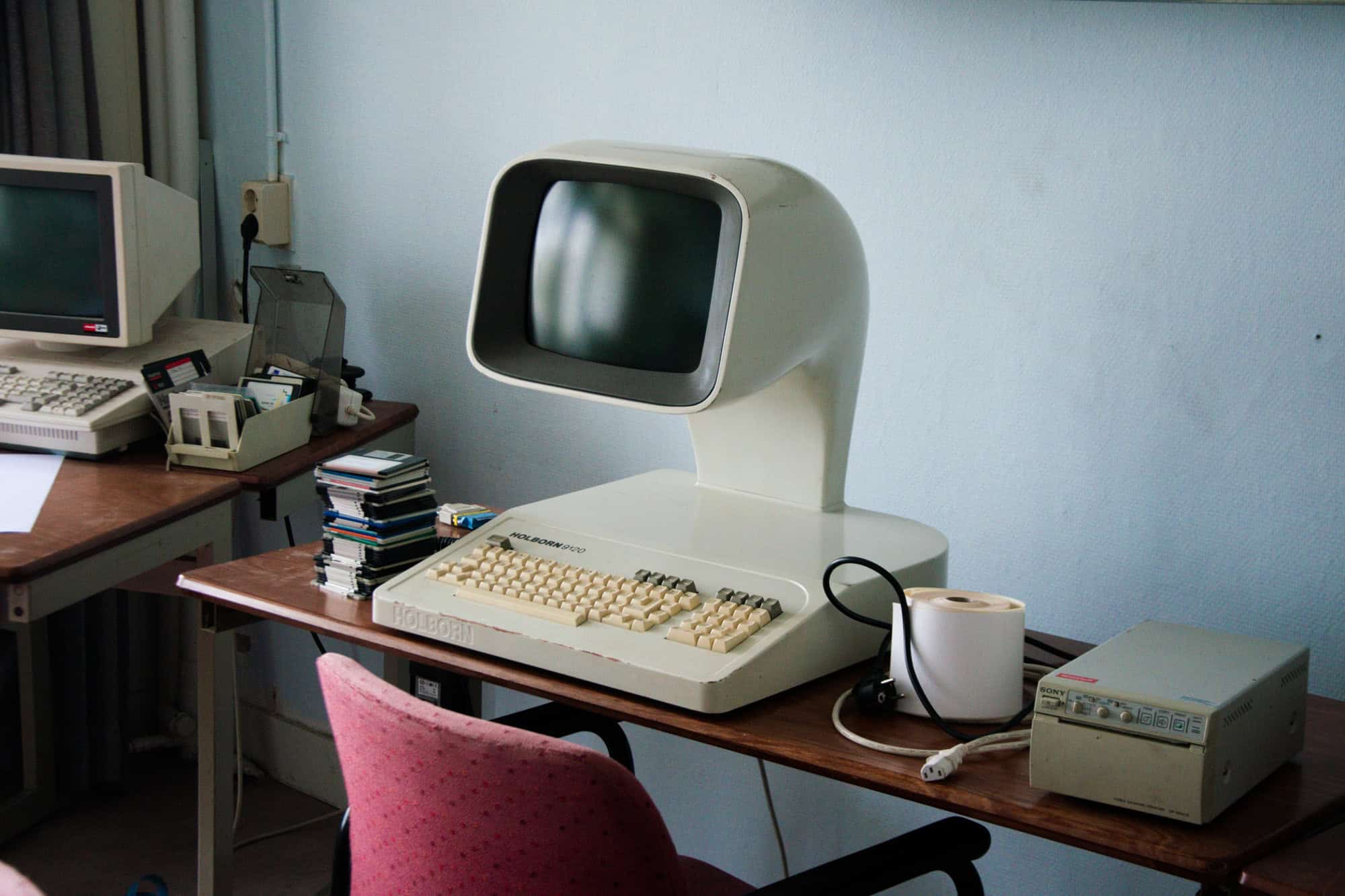In the early 1980s, computers were far from the light and thin machines they are today. While these models were no longer the room-size machines they had been decades prior, they were still clunky, awkward, and made by brands, many of which no longer exist.
Because I love everything retro, looking at LGR’s “Strangest Computer Designs of the ‘80s” is a fantastic trip down memory lane. From a computer-in–a-book, alien-like designs, and 40-pound computers, the wacky designs of these machines were something else.
There’s just something cool about seeing these computers’ weird designs. In a time when computers look too similar, this list showcases when computer manufacturers still wanted to be unique.
Wacky Computer Designs
Holborn 9100
The Holborn 9xxx series of computers is undoubtedly one of the most unique-looking computers of the 1980s. This Dutch-manufactured machine sold only around 200 models before the company went bankrupt in 1983. However, it’s hard to argue that the alien-head-like and monochrome monitor are among the most unique designs.
ACT Apricot Portable
Ignoring the unique name, there is no question that the 1984 release of the Apricot Portable by ACT was the company’s first attempt at a computer. Portable computers were growing in popularity, and with their carrying case design, including a wireless keyboard, ACT hoped to carry the market.
Applied Technologies Computer-In-A-Book
Applied Technologies was flying high in Australia thanks to its MicroBee computer systems, which made its “Computer-In-A-Book” design unique and retro. However, the design resembled repacking an existing Applied Technologies machine that looked more like books than the traditional gray computer design. Sadly, the computer was prone to overheating and was ultimately removed from the market.
Coleco Adam
A company best known for being among the early entrants in the video game space, Coleco jumped into the computer market with Adam in 1983. The 1983 Adam was an awful design because you couldn’t start the computer without the printer being plugged in. User complaints were also significant about the reliability of disk drives and the power supply emitting an electromagnetic pulse.
Unisys Icon
Introduced in 1983, the Unisys Icon was built with networking in mind, specifically for education in Canada. Without any internal memory, ten computers could be plugged in together across a network in the mid to late 1980s so teachers could share lesson plans.
Seiko UC-2000
Arguably, the most unique computer on this list, the Seiko UC-2000, was both a smartwatch and a computer. Connecting its smartwatch” to a QWERTY keypad, the Seiko was considered a “personal information processor.” You could even connect the smartwatch to a UC-2200 docking station, which enabled users to introduce a thermal printing option.
IBM PCjr
What would widely be regarded as the best-known computer on this list, the IBM PCjr was one of IBM’s biggest failures. Designed to be a lower-cost model of the IBM PCs already on the market, IBM hoped this model would attract computer game fans and compete directly with the Commodore 64 and the Apple II.
However, IBM didn’t give the PCjr a fighting chance with a disappointing software library and aggravating keyboard, making it difficult for users to expand their memory and capabilities. In fact, with only 128KB of RAM, the computer wasn’t powerful enough to play many of the PC games it was intended for.
The Access Computer
This wild design of the Access Computer was “portable” in the loosest possible way. This machine was retro because it included a 9-inch monochrome monitor directly attached to the keyboard. The total weight, with the printer on top of the monitor, was almost 40 pounds. At that weight, you can imagine just how many models were sold.
ELWRO 800
Originally designed as a toy piano, the Polish design of the ELWRO 800 was essentially a clone of the ZX Spectrum. Intended for use in schools, the computer had a full-size keyboard and could connect to a network of other computers, enabling teachers to see exactly what students were doing in class.
Check Out LGR
I highly encourage everyone to check out LGR’s YouTube channel for more videos like this one. With 1.74 million subscribers, there are plenty of retro computing videos like this one, including strange computer designs from the 1970s and 1990s.
The image featured at the top of this post is ©Mitch Altman / Creative Commons Attribution-Share Alike 2.0 Generic license.

